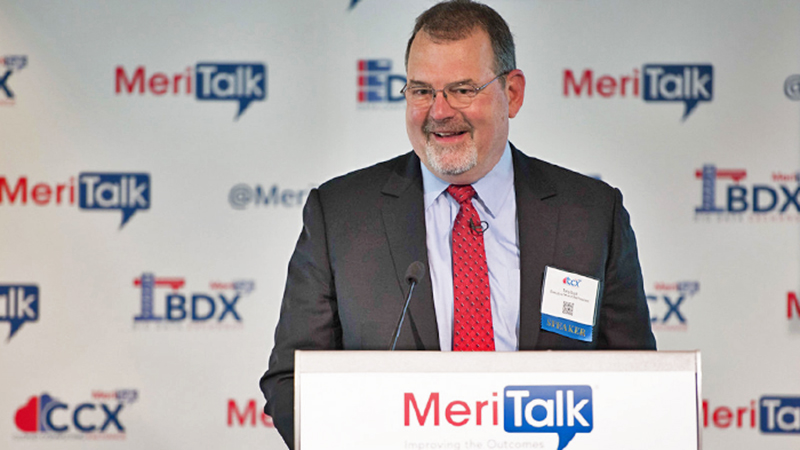
Government IT has a problem with planning better solutions, not coming up with ideas for those solutions, according to Federal CIO Tony Scott.
“Ideas are not the problem in Washington; Washington is full of ideas. What Washington doesn’t have…is a good implementation plan for those ideas,” Scott said at a Citrix cybersecurity event on Wednesday. “Ideas are free, implementation plans are where the rubber meets the road.”
Scott spoke on both the advances and the needed changes in Federal IT, saying that many agencies know what they need to improve, but do not have a way to get to that point.
“I would like to be a lot thinner, I would like to have a lot less gray hair; there’s a lot of things I would like to do, and I can describe what that looks like. Getting there, that’s the hard part,” Scott joked. “Similarly in the Federal government, getting there is the hard part.”
One problem is outdated IT systems. With currently available funds, many CIOs struggle to get the money needed to update the systems, as they must take it out of already-set IT budgets.
“The answer, unfortunately in many cases, is ‘over my dead body,’ ” Scott said of asking for such funding. “Everything is on, more or less, life support.”
Scott’s plan for a $3 billion IT modernization fund would provide agencies with the needed funding for upgrades, while also ensuring that agency leaders have some “skin in the game” through the need to pay back the fund.
“It’s a simple concept; it’s one that’s followed by the private sector almost universally,” Scott said.
In his experience working in the private sector, Scott said he was able to take a single investment of money and use it to continually keep his systems updated. “I didn’t have to ask for another nickel because I could just ride the wave that technology brings.”
Scott thinks the problem with government lies more in the organization and strategy of many Federal agencies. He said that companies that focus more on their organization chart and less on consumer needs are far less likely to be digitally successful.
“If you can figure out the org chart, I guarantee you that’s not a digital organization. If you can’t it’s likely that that enterprise is well on its way to digitization,” Scott said. “Go look at our Federal agencies. Go look at the Web pages. I’ll bet you that you can figure out what the exact org chart of the organization looks like. Because, in many cases, what we do is we shove out our programs and our missions in very siloed fashion through our Web presence and the way we administer and deliver our capability.”
He pointed to successful digital companies like Uber, Google, and eBay as examples of those whose org charts are hard to decipher, but provide excellent services.
“The reason that’s an important question is the org chart often dictates governance, dictates architecture, dictates how decisions get made, dictates the scope of projects and the scope of infrastructure, and so on,” Scott said. “What digital organizations have figured out is that the customer comes first. Brand and reputation and a great customer experience, that includes security, comes first.”
According to Scott, this is particularly important for the Federal government, as hackers are increasingly targeting outdated business practices in order to get access to Federal systems.
“The answer to that, by the way, is get a more robust digital business process that, by design, will be more secure,” Scott said, noting that recent changes have done little to alter the core weaknesses of the business process. “The business process itself didn’t change: it’s still a reflection of the org chart.”
